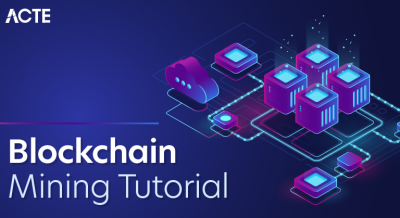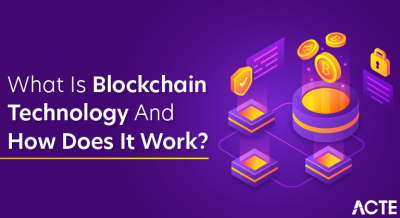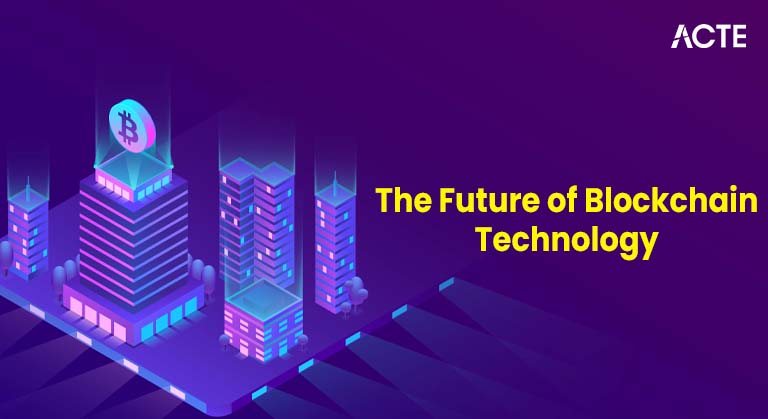
- Introduction: The Evolution of Blockchain
- Current State of Blockchain Technology
- Emerging Trends Shaping Blockchain’s Future
- Blockchain and Decentralized Finance (DeFi)
- Integration of Blockchain with Emerging Technologies
- Challenges Facing Blockchain Adoption
- Regulatory Developments and Their Impact
- Predictions and Opportunities for the Next Decade
- Conclusion
Introduction: The Evolution of Blockchain
Blockchain technology, first introduced by the Bitcoin whitepaper in 2008, has transformed from a niche cryptographic concept into a disruptive force across industries. Initially designed to enable decentralized digital currency, blockchain’s core attributes, decentralization, immutability, transparency, and security have attracted attention far beyond finance. Over the past decade, blockchain has evolved rapidly. From proof-of-concept projects to real-world applications in supply chain, healthcare, voting, and identity management, blockchain is reshaping how data and value are exchanged. As we look to the future, blockchain’s trajectory will be shaped by technological advances, regulatory frameworks, and growing adoption across sectors.
Do You Want to Learn More About Blockchain? Get Info From Our Blockchain Training Course Today!
Current State of Blockchain Technology
Today, blockchain exists in several forms: Everyone can access public blockchains such as Ethereum and Bitcoin. These networks are open to all users. Since they are completely decentralized, no one organization has complete control over them. To participate, no one needs permission. Blockchains that are private and consortium operate differently. They are mostly utilized by businesses and restrict access. These private networks are safe and limit access and modification. Some networks combine elements of both kinds. By keeping some aspects private, these hybrid systems allow users to benefit from the transparency of public blockchains. Combining the best aspects of both worlds is their goal. Smart contracts have expanded blockchain capabilities beyond simple transactions, enabling automated, trustless agreements. However, blockchain also faces challenges, including scalability issues, high energy consumption (especially in Proof-of-Work systems), interoperability gaps, and concerns about privacy. Despite these hurdles, investment and innovation in blockchain continue to accelerate globally.
Emerging Trends Shaping Blockchain’s Future
- Scalability remains a top priority. Layer 2 solutions such as rollups, sidechains, and state channels aim to process transactions off the main blockchain to increase throughput and reduce fees. Ethereum’s transition to Proof-of-Stake (PoS) with Ethereum 2.0 promises to improve energy efficiency and transaction speed.
- Blockchain ecosystems are currently fragmented. Protocols like Polkadot, Cosmos, and Avalanche are working to enable cross-chain communication and asset transfers, creating a more connected blockchain landscape.
- Privacy-preserving technologies such as zero-knowledge proofs and confidential transactions will make blockchain applications compliant with data privacy regulations and suitable for sensitive use cases.
- The tokenization of physical and digital assets, including real estate, art, and intellectual property, will unlock new liquidity and investment opportunities.
- DAOs enable decentralized governance models where stakeholders collectively manage projects and protocols. This could revolutionize corporate and community decision-making.
- More user-friendly DeFi interfaces to attract mainstream users.
- Cross-chain DeFi protocols enabling seamless liquidity.
- Integration with traditional finance for hybrid solutions.
- Enhanced security standards to mitigate hacks and fraud.
- Anti-money laundering (AML) and know your customer (KYC) rules
- Consumer protection laws
- Data privacy compliance
- Securities regulation related to token sales
- Mass Adoption in Enterprise: Blockchain will become integral to supply chains, healthcare records, identity verification, and more.
- Digital Currencies by Central Banks (CBDCs): Many countries will issue CBDCs, leveraging blockchain for more efficient monetary systems.
- Mainstream DeFi: Financial services will be increasingly decentralized and accessible globally.
- Sustainable Blockchain Networks: Proof-of-Stake and other green consensus models will dominate.
- Greater Collaboration: Public-private partnerships and international standards will enhance interoperability and security.
- New Business Models: DAOs and token economies will reshape organizational structures and incentives.
Would You Like to Know More About Blockchain? Sign Up For Our Blockchain Training Course Now!
Blockchain and Decentralized Finance (DeFi)
DeFi is one of the fastest-growing sectors in blockchain. It offers financial services like lending, borrowing, trading, and insurance without intermediaries. Future growth areas include:
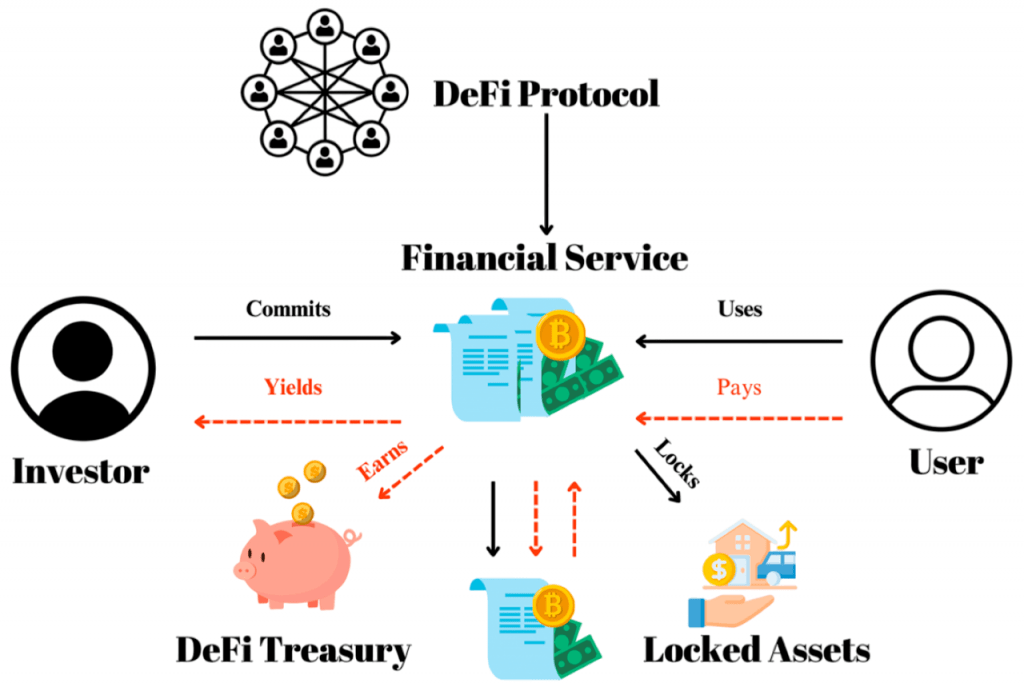
DeFi’s expansion will drive blockchain adoption, but also raise regulatory scrutiny.
Integration of Blockchain with Emerging Technologies
Today’s tech is working together to shake up how we live, work, and talk to each other. One big player is Artificial Intelligence (AI). It’s what makes computers and machines learn from what they’ve seen, solve problems, and even decide stuff kind of like humans do. AI is everywhere: helping doctors, managing money, handling customer questions, and more. It saves us time and gets things right more often. Another major tech is the Internet of Things (IoT). That’s a fancy way of saying devices like phones, fridges, and cars talk to each other online. They share info so we can control or check on things from far away. For example, a smart home system can turn off the lights or change the thermostat with your phone. 5G is the newest way to connect your phone or device. It’s way faster than what we used before, and it handles lots of devices at once. It makes online gaming, video calls, and even city traffic work smoother and faster. Then there’s Edge Computing. That’s about cleaning up data close to where it’s made instead of sending it far away. It makes getting results quicker and eases the load on the internet. All these tech tools work together to make our lives faster, smarter, and less complicated.
Challenges Facing Blockchain Adoption
Blockchain has come a long way in recent years, but big problems still hold it back from going mainstream. One of the main issues is how slow and costly it is to do lots of transactions at once. This makes it tough for networks to keep up during busy times. User friendliness is another headache. Most blockchain systems are too complicated and confusing for the average person, so not many people really want to use them.
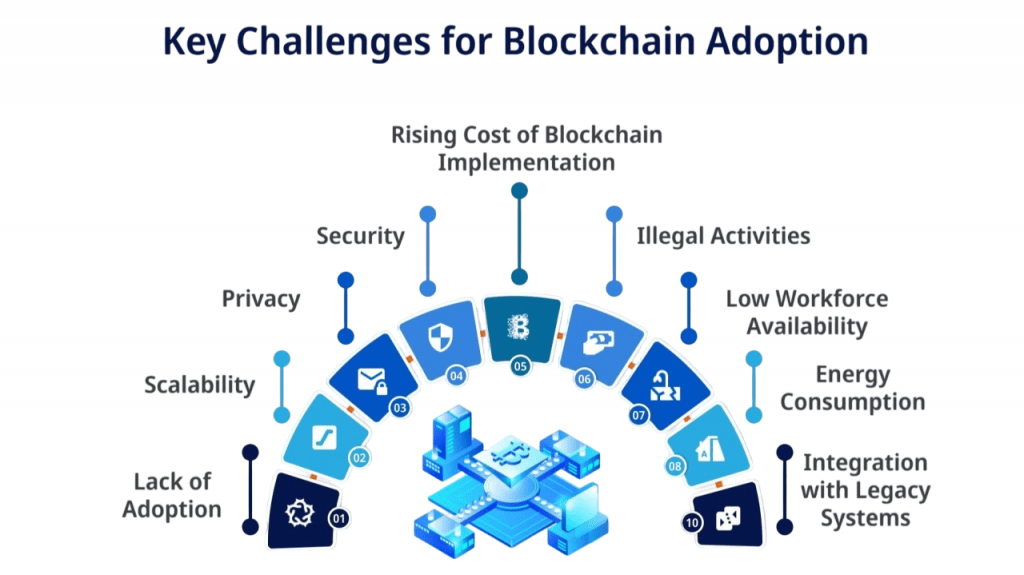
Confusing laws add to the mess since rules around cryptocurrencies change from place to place and are not clear yet. Security is also a concern. Smart contracts sometimes have bugs, and scams can pop up, making people nervous to trust the system. Environmental worries are growing, especially with blockchains that burn tons of energy just to process transactions. These problems need fixing before blockchain can truly reach its potential and be used by everyone.
Regulatory Developments and Their Impact
Governments worldwide are crafting regulations to address the opportunities and risks of blockchain technology. Key regulatory areas include Cryptocurrency classification and taxation
Balanced regulation can foster innovation while protecting users, but overly restrictive policies may hamper growth.
Are You Preparing for Blockchain Jobs? Check Out ACTE’s Blockchain Interview Questions and Answers to Boost Your Preparation!
Predictions and Opportunities for the Next Decade
Conclusion
The future of blockchain technology is poised to redefine how individuals, businesses, and governments interact with data and value. While challenges remain, ongoing innovations and increasing adoption signal a transformative decade ahead. Blockchain’s promise lies in creating a more transparent, secure, and decentralized digital world, one that empowers users and fosters new economic opportunities. As technology matures, staying informed and adaptable will be key to harnessing blockchain’s full potential.


